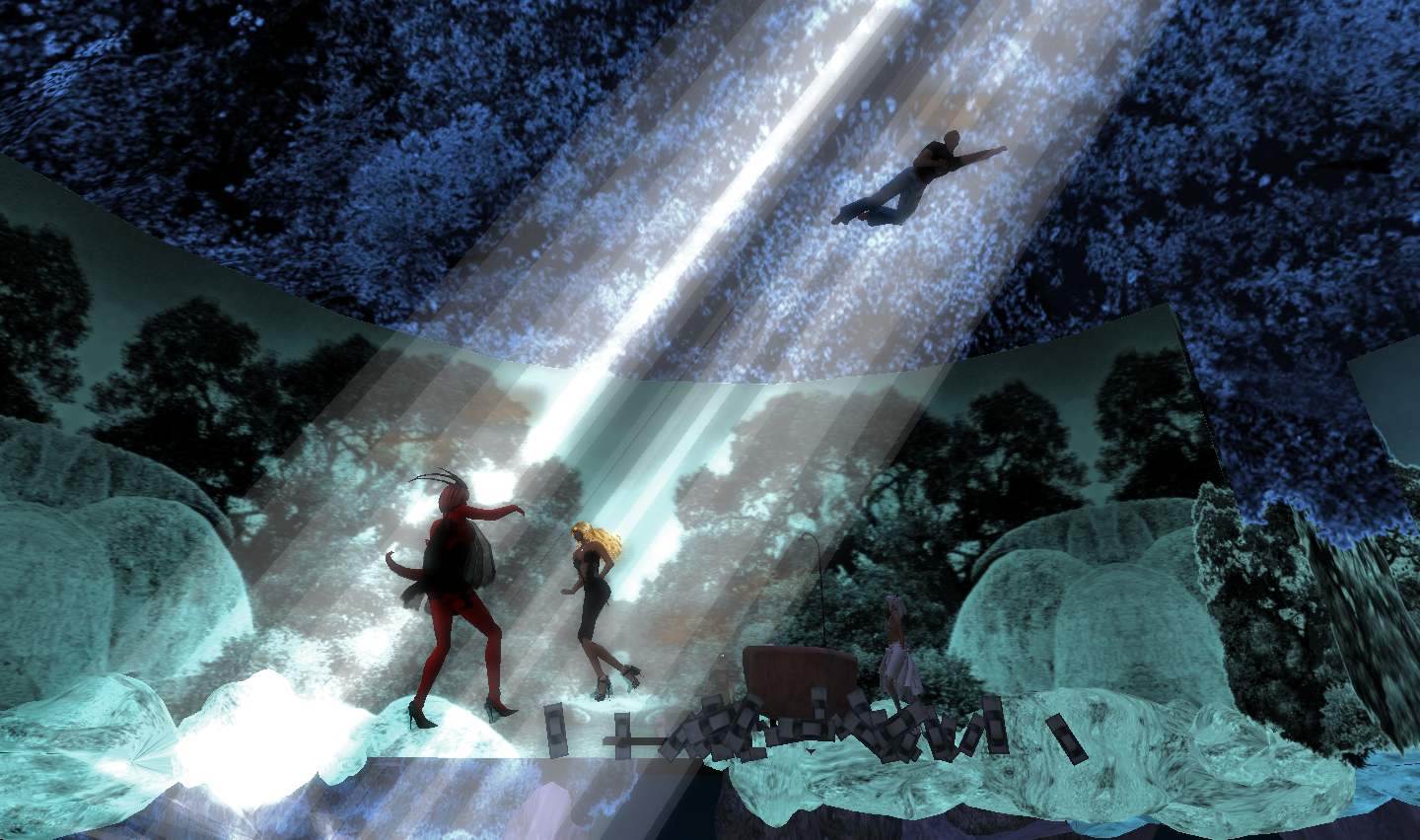This
course offers students the unique opportunity to study the
philosophy of art in the company of dozens of artists and one
philosopher (the course instructor) who have been
centrally involved
for a number of years in developing a new medium of aesthetic
expression: that of the art of virtual worlds. Virtual worlds are
computer generated, immersive, three-dimensional environments that
allow people from around the globe to interact with one another through
“avatars” (digital bodies) and to shape their environments, both
individually and collectively, by using graphical and programming
tools. In
process of development since the 1980s,
virtual worlds now
have more than 12 million participants, and include such venues as
Second Life, VastPark, OpenSim, Blue Mars,
and World of Warcraft. From an artistic point of view, virtual worlds
are currently where photogtaphy was in 1860 and cinema in 1910; in
other words, they constitute a new technological medium whose specific
expressive possibilites artists are just beginning to explore. In a
sense, art is being reinvented within the new medium of virtual worlds,
and those involved in such reinvention are starting to raise questions
that lie within the traditonal province of philosophy of art. Such
questions include the following:
Exactly
what is art and how does it
differ from other human activities?
Are judgements
concering the quality of artworks purely subjective, or do objective
and perhaps universal standards of such judgement exist?
What
role do creativity and genius play in the work of the artist?
Is
art concerned with the revelation of truth, and if so, how is the truth
sought in art related to scientific, mathematical, or philosophical
truth?
Is it appropriate to apply moral or political
criteria in
judging works of art, or does art lie outside the sphere of competency
of morality and politcs?
What is the relationship between art and mass
entertainment?
Does
beauty have an essential role to play in art, or can artworks be ugly
and still have something powerful and important to communicate?
What is
the relationship between beauty in art and beauty in the natural world?
Should artists seek to be embraced or absorbed by
society, or should
they regard themselves instead as critics of the societies they
inhabit?
How does technological, or "new media" art differ
from
such traditional arts as painting, sculpture, literature, acoustic
music, and so on?
Does the idea of an avant-garde still have any
significance in the early 21st century?
In this course, we will
consider these and other questions with specific reference to the art
now being created in virtual worlds, especially by the international
community of artists active on the Caerleon sims in the virtual worlds,
Second Life and ReactionGrid.



